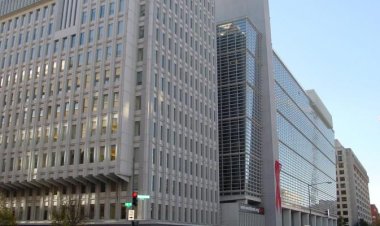Blocking the sun's rays from the earth.. America is studying the "last climate option" to save the planet
The US administration led by Joe Biden seemed open to considering the possibility of blocking sunlight. to discourage the acceleration of global warming, the report talks about moving this concept "cautiously" from science fiction to reality.

The United States is seriously considering blocking the sun's rays from the globe as a last resort to curb climate change as a result of global warming, in a vision that exceeds the limits of science fiction.
According to the report from the White House Office of Science and Technology Policy, the US administration led by Joe Biden seemed open to considering the possibility of blocking sunlight. to discourage the acceleration of global warming, the report talks about moving this concept "cautiously" from science fiction to reality.
The report drew the attention of scientists and science enthusiasts around the world to an idea formerly confined to science fiction geoengineering techniques that is now being explored in practice, including its potential far-reaching implications.
Solar geoengineering research
In recent years, these technologies have seeped into mainstream climate discussions as a policy option of last resort, and have garnered attention and funding. In 2019, the US Congress awarded the National Oceanic and Atmospheric Administration (NOAA) millions of dollars for solar geoengineering research.
In March 2021, the US National Academies of Sciences, Engineering, and Medicine called on the country to spend an additional $100-200 million.

Solar geoengineering: what is it?
The idea of 'sunblocking' or solar radiation modulation (SRM) is to artificially alter sunlight in order to control the cooling of the planet.
Scientists define "solar geoengineering" as "a large-scale deliberate intervention in the Earth's natural systems to counter climate change."
position of the scientific elite
Scientists in various political institutions have called for efforts to dim the sun and cool the Earth to be hampered, and to place limits on solar geoengineering research so that it cannot be published unilaterally by countries, companies, or individuals.
Academics argue that long-term, planetary-scale solar geoengineering interventions of this kind are unprecedented and too risky, and therefore should not be attempted outdoors, receiving patents, public funds, or international support.
Scientists suggest that a groundbreaking solar geoengineering proposal - injecting billions of aerosol particles into Earth's stratosphere - could have unintended and unforeseen consequences.
A sudden drop in sunlight could cause Earth to experience what scientists call a "termination shock," with a sudden rise in temperature due to atmospheric carbon emissions that may be masked by cooling aerosols in the Earth's stratosphere.

Potential impacts on the planet
Solar geoengineering will reduce the amount of solar radiation that reaches the planet's surface, thus having profound effects.
The planet will cool, but not evenly. The Amazon could become drier and warmer, increasing the likelihood of major wildfires and increased rainforest death.
This leads to a huge potential release of previously sequestered carbon, and ocean acidification will continue to worsen.
The massive release of the Amazon's carbon into the atmosphere would spell disaster for the planet, dramatically increasing global warming while reducing biodiversity. These impacts could be worse than the IPCC's moderate climate change scenarios.


 Shrouq
Shrouq 












